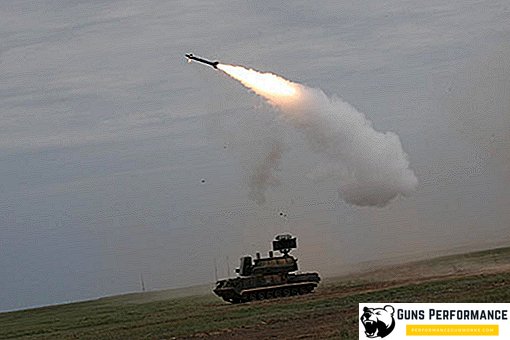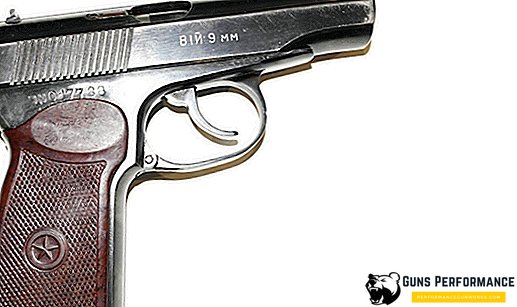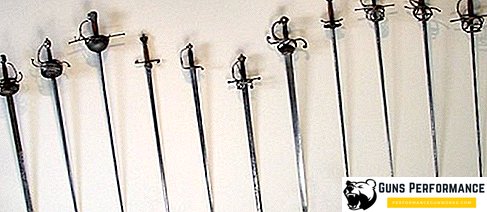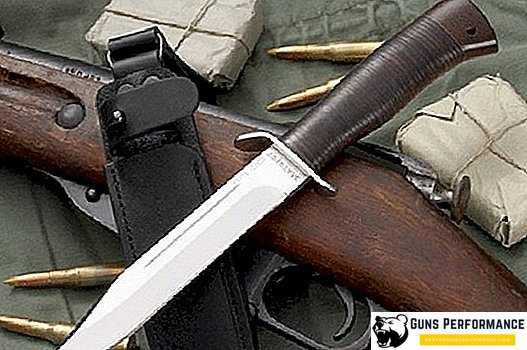
Yawara, despite its harmless appearance, is a fairly effective weapon of self-defense. Unlike kubotan (which was developed relatively recently), yavara is an ancient Japanese analogue of brass knuckles.
Yawara is a small stick made of wood or other hard material that is clamped in a fist. In this case, the ends of the sticks should protrude from the fist on both sides for 3-5 centimeters. Such weapons were used not only in Japan, but also in Russia (Chizhik), Vietnam (Cobo), Malaysia (barrel-muzzle). Often, the ends of the Yawary are honed on both sides in the form of a cone, which allows you to strike, all of whose energy is concentrated at one point. Some models are equipped with a lateral spine thorn, which allows the use of Javar and for attacks. However, you should not look for or make such a model for yourself; it can easily be recognized as a cold, brass-like weapon.
Instead of Yawary, you can use any object that is similar in shape, the combat technique will not change. Perfect fit:
- Nails;
- Spanners;
- Metal hairbrushes and similar items.
Popular tactical pen is also used by analogy with jawara.

How did yavara appear
There are two official versions of Yawary origin:
- According to the first version, the Yavara is a vajra modified by the Japanese for self-defense, which is a symbol of lightning, one of the shrines of Buddhist monks. Seeing how cleverly the monks use the vajra, the Japanese have perfected it to perfection;
- If you believe the second version, then the Yavara is nothing more than a regular pestle, which was used by peasants in the household to pound the grain.
Considering that in those days self-defense only interested unarmed peasants, they most likely simply began to use pistils by analogy with the vajra.
Traditional Yavara was made of solid wood, especially those trees that were considered the receptacle of spirits were especially loved. A wand of yavara from such a tree was supposed to convey to its owner the strength and wisdom of forest spirits. By virtue of its general accessibility, the Yavara was extremely popular among the peasant class. Using Yavara as a weapon of self-defense, it was possible to confront several unarmed opponents.
In the martial arts of medieval Japan, Yavara was often used to produce the compression of the “right” fist. There is an opinion that an analogue of Yawary was also used in Europe, but this is fundamentally wrong. In the presence of a huge amount of various weapons, there simply was no need for such weapons as a Yavar. For spies and secret killers, knives and stilettos were much more effective. Do not think that the various traditional Okinawan weapons arose from the fact that the blade weapon was ineffective. Simply, it was banned, so I had to invent various alternative options.
What is yavara needed for and how to choose your own version

The main key in self-defense with jawar can be called effects on the enemy's pain points. Do not think that this is some kind of secret and hard-to-reach places on the human body. It is enough to apply a series of blows to the neck, joints or head. Best of all, if yavary will be in both hands. It is easy to study the technique of fighting with javara, because it is built on instinctive punches with a fist (the traditional punch with knuckles does not belong to the instinctive one).
Each yavara is unique. Of course, there are factory models, but they do not take into account the characteristics of a particular person. After all, each person's hand is different, respectively, and the yavara should be different. It is better to make yourself a weapon of self-defense or to upgrade a purchased copy. Often on sale can be found Yawary, decorated with artsy carvings. You shouldn’t spend money on such a product, the yavara should be simple and convenient;
Jawara technique

To use Yavaru with the greatest efficiency, you need to have a sharp and quickly delivered blow. The ends of the yawaras are capable of delivering powerful traumatic blows. Even if a person does not know how to properly beat with a fist, javara can be beaten with the full swing without fear of dislocation of the hand or a broken fist. Of course, before using jawars in combat, it is better to practice with a partner or at least on a mannequin. Do not think that the Yavara will turn you into a super fighter. It can only increase the force of impact, it will not add to you the speed and speed of reaction.
Some masters of martial arts recommend using Yavara for the left hand, so that the right one can fight a traditional battle. This point of view is appropriate when the battle is conducted by a trained hand-to-hand fighter, his entire technique is designed specifically for punches (a java may interfere with him). It is better for an ordinary person to hold a Javar in his right hand and study the blows of her precisely, since they are faster (in the case of a right-handed person).
Ways of grabbing yavary
There are five main ways of holding Yawari, although there are various combined grips.
- Grip, in which the ends of the Jawars protrude from the fist at the same distance;
- When the butt protrudes only from below;
- When the butt protrudes from above;
- The usual "knife" grip;
- "Finnish" knife grip when one butt rests on the palm.
The use of various grip is not necessary, just try to find the best option for you and work it out. It is desirable to train with a partner and in full force. In this case, use a piece of rubber hose of similar dimensions, otherwise serious injuries cannot be avoided.

The technique of using Yawary is perfectly combined with punches and kicks. Use the full potential of strokes with slopes and movements - this will give you a significant advantage in any fight.












